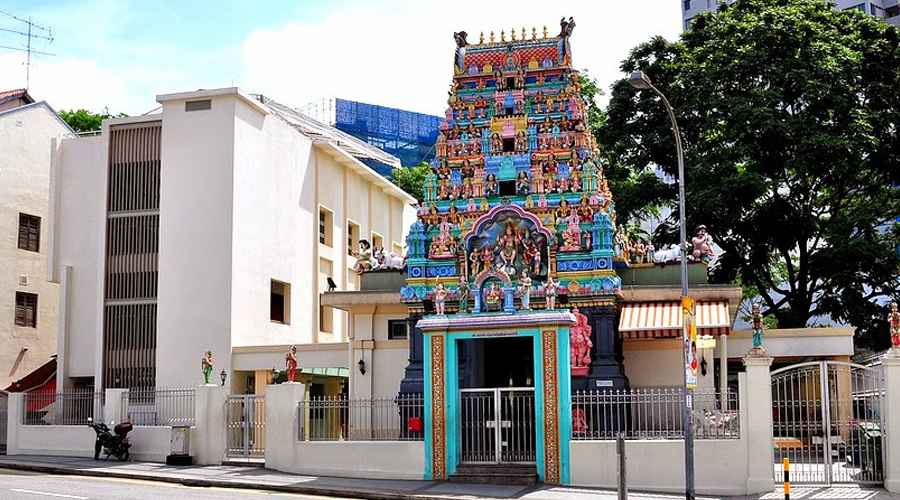India is a land of awe-inspiring monuments, but among its treasures, one stands out as both mystifying and unmatched in scale—the Kailasa Temple at Ellora. Carved entirely from a single rock, this architectural feat defies imagination. It is not simply a temple but a sculpted mountain, embodying divine devotion, cultural brilliance, and astonishing engineering prowess from over a thousand years ago.
Location and Historical Context
The Kailasa Temple, also known as Kailasanatha Temple, is part of the Ellora Caves in the state of Maharashtra. Ellora itself is a UNESCO World Heritage Site and contains 34 monasteries and temples carved into the vertical face of the Charanandri Hills. Out of these, Cave 16 houses the Kailasa Temple, regarded as the most elaborate and monumental of them all.
Built during the reign of the Rashtrakuta king Krishna I in the 8th century, this temple was intended as a tribute to Lord Shiva. The Rashtrakutas were great patrons of art and architecture, and through this temple, they sought to immortalize their devotion and power. Inscriptions and stylistic details date the construction to roughly 756–773 CE.
A Masterpiece of Rock-Cut Architecture
Unlike most temples built by adding blocks of stone, the Kailasa Temple is carved vertically from a basalt hill. Ancient artisans removed roughly 200,000 tons of rock using only hammers, chisels, and other primitive tools over several decades. The structure was hewn from the top down, meaning the craftsmen began at the summit and meticulously cut their way downward. This unusual method not only required precision but also eliminated the possibility of error—an accidental break or miscalculation could ruin the entire monument.
When viewed from above, the Kailasa Temple resembles Mount Kailash, the mythological abode of Lord Shiva. The temple complex was designed as a symbolic replica of this celestial mountain, complete with courtyards, shrines, gateways, and sculpted guardians. Despite being made from one solid rock, it gives the impression of being built in multiple sections like a free-standing structure.
Architectural Layout
The temple complex measures about 276 by 154 feet and rises to a height of nearly 100 feet. At its core stands the sanctum (garbhagriha), which houses a Shiva lingam—the symbolic representation of Lord Shiva. The sanctum is crowned with a towering shikhara (spire), intricately decorated and visible from afar.
In front of the main shrine stands a large Nandi Mandapa (pavilion dedicated to Nandi, Shiva’s bull vehicle). The Nandi Mandapa and the temple are connected by a stone bridge carved directly from the same hill.
The walls of the temple are covered with exquisite sculptures—mythological scenes from the Ramayana, Mahabharata, and the life of Lord Shiva, as well as celestial beings, animals, and floral motifs. Some of the most striking panels depict the demon Ravana shaking Mount Kailash, a dynamic portrayal full of movement and energy, and the marriage of Lord Shiva and Parvati, showing divine harmony.
Artistic and Cultural Significance
The Kailasa Temple represents more than just religious devotion. It is a manifestation of the synthesis of art, mythology, and engineering. The sheer scale and sophistication of its carvings make it stand apart from every other rock-cut monument in India.
The temple reflects the Rashtrakuta dynasty’s desire to present themselves as divinely ordained rulers, protectors of dharma (righteousness), and patrons of culture. By commissioning a monument that rivaled the heavens themselves in grandeur, they ensured their legacy would endure across centuries.
Additionally, the artwork in Kailasa bridges the religious traditions of Hinduism while showcasing stylistic influences from contemporary Buddhist and Jain rock-cut caves at Ellora. This cultural coexistence highlights the pluralistic ethos of ancient Indian society.
Engineering Marvel and Mysteries
Historians and architects continue to marvel at how the Kailasa Temple was completed with the technology of the 8th century. Estimates suggest that it would have taken thousands of workers and decades of relentless chiseling to remove the massive volume of rock required to free the temple structure. Yet, despite this daunting task, the design maintains incredible symmetry and detail.
Modern archaeologists remain puzzled by the precision of the temple’s construction. Unlike block-by-block masonry, where errors can be corrected, the top-down rock-cut method required perfect planning and execution from the start. This raises questions about ancient architectural knowledge, planning techniques, and organizational capacities that seem far advanced for their time.
Such mysteries have fueled legends and myths surrounding the temple. Folklore claims it was constructed in just one night by a divine architect, underscoring the awe it evoked in the people of earlier times.
The Temple Today
The Kailasa Temple continues to attract visitors from across the world—not only devotees of Lord Shiva but also tourists, historians, and scholars eager to witness its grandeur. It stands as a central attraction at Ellora and is celebrated during the annual Ellora–Ajanta Festival, which blends dance, music, and cultural performances against the backdrop of this timeless structure.
Despite centuries of weathering and historical invasions, much of the temple remains intact, a testament to the strength of both its material and its craftsmanship. Restoration and preservation efforts by the Archaeological Survey of India ensure that future generations will continue to experience its magnificence.
Conclusion
The Kailasa Temple at Ellora is more than a religious shrine; it is a monument to human ingenuity, endurance, and artistic excellence. Its creation from a single rock defies conventional logic, while its intricate beauty reflects the spiritual imagination of its makers. To stand before it is to witness history frozen in stone, an eternal dialogue between the divine and human creativity.
More than 1,200 years after its construction, the Kailasa Temple remains one of India’s greatest architectural wonders, a reminder that true devotion can carve not only mountains but immortal legacies.

